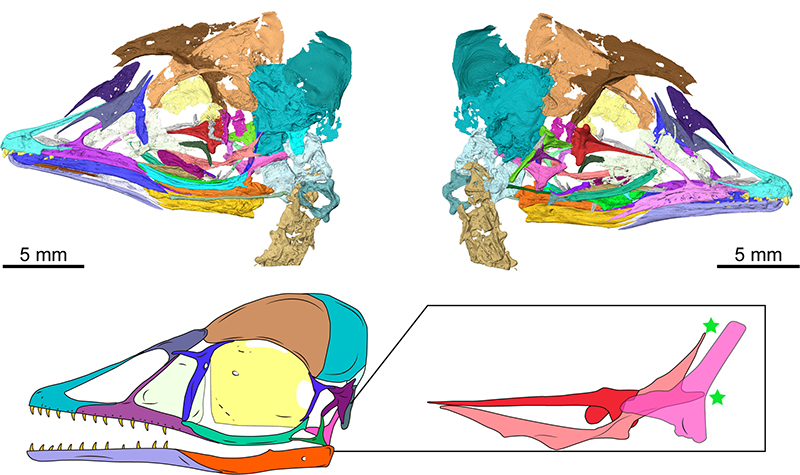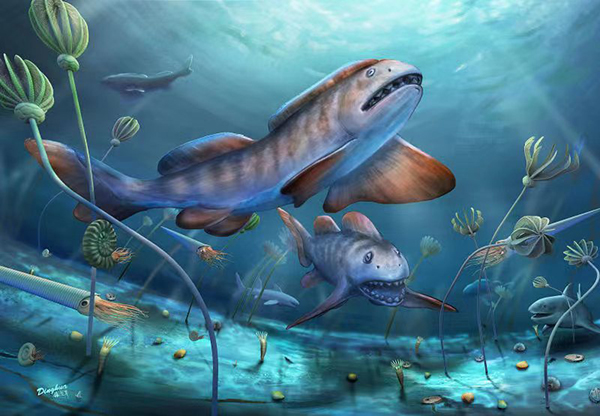 |
Researchers Find Fossil of Extinct Early Bird That Could Stick Out Its Tongue |
A new fossil skeleton of an extinct species of bird from northeastern China that lived alongside dinosaurs 120 million years ago unexpectedly preserves a bony tongue that is nearly as long as its head.
The skull is very well preserved, showing that it had a relatively short snout and small teeth, with extremely ... |
|
 |
Critiques & Debates: Is the monotreme middle ear primitive for mammals? |
| A commentary was recently published as a piece of Critiques & Debates at National Science Review (NSR) (hereinafter referred to as "Commentary"), which raised issues about the article (referred to as "Original") published in Nature. The title of the "Original" is "A monotreme-like auditory apparatus in a Middle Jura... |
|
|
|
 |
Organic Molecule Remnants found in the Nuclei of Ancient Dinosaur Cells |
| A team of scientists from the Institute of Vertebrate Paleontology and Paleoanthropology (IVPP) of the Chinese Academy of Sciences and from the Shandong Tianyu Museum of Nature (STM) have isolated exquisitely preserved cartilage cells in a 125-million-year-old dinosaur from Northeast China that contain nuclei with r... |
|
 |
Decoding Human History with Ancient DNA |
| This year is the 20th anniversary of sequencing the human genome. In honor of this event, a research team led by Prof. FU Qiaomei from the Institute of Vertebrate Paleontology and Paleoanthropology (IVPP) of the Chinese Academy of Sciences reviewed the most recent progress in the field of ancient DNA (aDNA), i.e., D... |
|
|
|
|
|
 |
First Giant Dinosaur Fossils from Xinjiang Hami Pterosaur Fauna Found |
| A joint Sino-Brazilian research team led by Dr. WANG Xiaolin from the Institute of Vertebrate Paleontology and Paleoanthropology (IVPP) of the Chinese Academy of Sciences has reported new dinosaur fossils from the Early Cretaceous Hami Pterosaur Fauna. All three of the newly reported dinosaurs are classified in the ... |
|
 |
New Findings Unveil a Missing Piece of Human Prehistory |
A joint research team led by Prof. FU Qiaomei from the Institute of Vertebrate Paleontology and Paleoanthropology (IVPP) of the Chinese Academy of Sciences sequenced the ancient genomes of 31 individuals from southern East Asia, thus unveiling a missing piece of human prehistory.
The study was published in Cell ... |
|
 |
Tiny ancient bird from China shares skull features with Tyrannosaurus rex |
Researchers from the Institute of Vertebrate Paleontology and Paleoanthropology (IVPP) of the Chinese Academy of Sciences have discovered a 120-million-year-old partial fossil skeleton of a tiny extinct bird that fits in the palm of the hand and preserves a unique skull with a mix of dinosaurian and bird features.
... |
|









